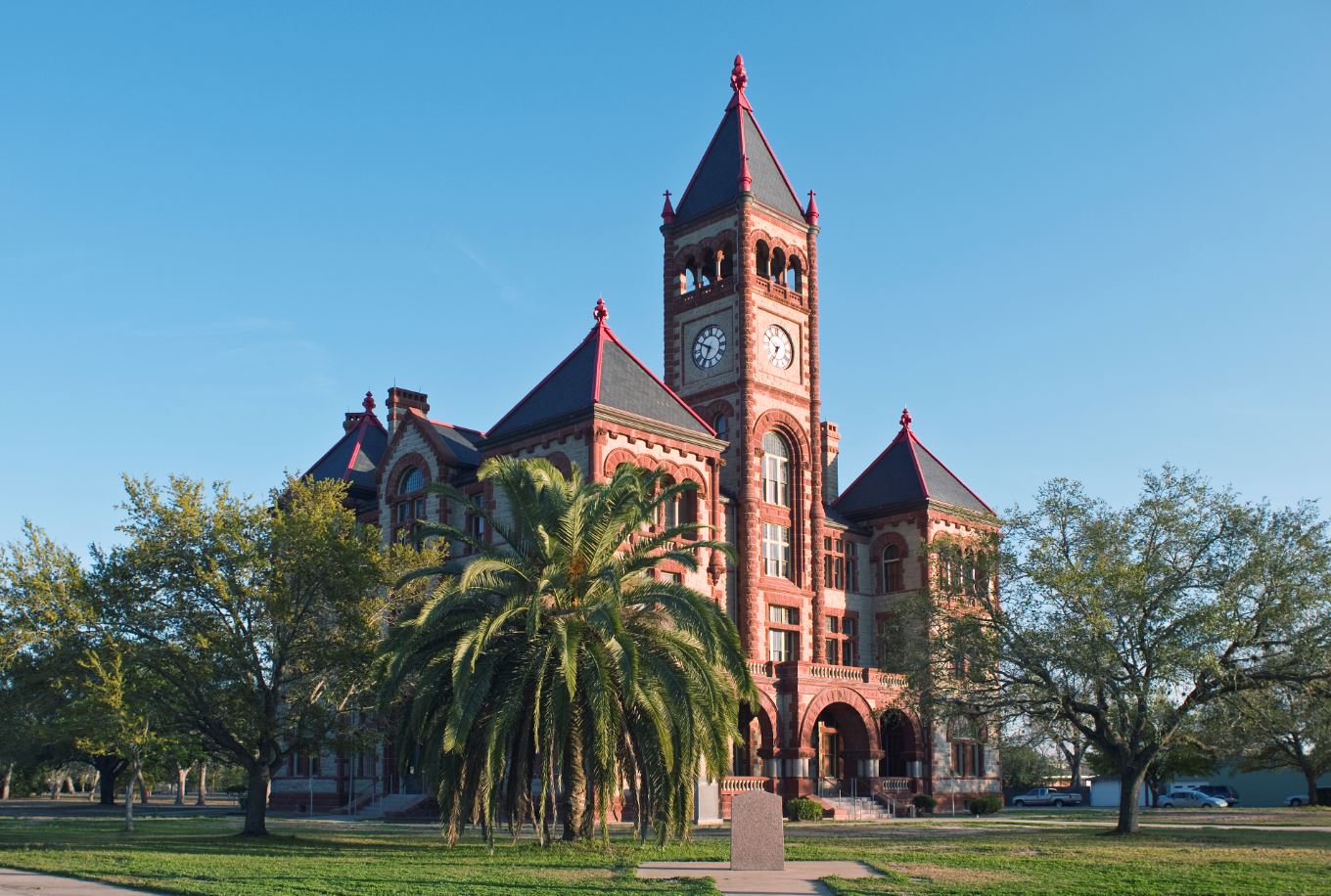DeWitt County
County Seat: Cuero
County Population: 20,097 (2010 Census)
The DeWitt County Courthouse was designed in a Richardsonian Romanesque Revival style. A. O. Watson was the original architect, but due to financial difficulties and lawsuits, he abandoned the project. The final product was completed by Eugene Heiner.
The unique courthouse style is named after architect Henry Hobson Richardson and incorporates 11th and 12th century southern French, Spanish, and Italian Romanesque characteristics. The three-story structure is fashioned of sandstone and pink granite and boasts a six-story clock tower. The courthouse was finished and accepted on May 20, 1896.
Eventually, the entire exterior was coated with a milky epoxy sealer that damaged the stone and obscured its distinctive coloration. By the 21st century, the courthouse’s original slate roof had been replaced with one of Spanish tile. Interior alterations made in the 1950s masked Victorian detail; dropped ceilings were installed, and a new floor level was inserted into the district courtroom.
DeWitt County received a Texas Historical Commission Texas Historic Courthouse Preservation Program Grant in 2004. What began as exterior refurbishment progressed into a full restoration of the courthouse, inside and out. The district courtroom was reopened to its historic two-story height, and the balcony was replicated. The building’s long-missing iron stairs with their decorative railings were reproduced, along with the elaborate woodwork lining the hallways and courtrooms. The courthouse was rededicated in October 2007 with a ceremony patterned after the 1896 original dedication.
DeWitt County was legally created on March 24, 1846, and was organized on July 13 of that same year with Cameron as the county seat. The county was named in honor of Green C. DeWitt, who established settlements and colonies in and around Gonzales. Clinton served as the county seat from 1849-1876, until Cuero, the terminus of the railroad, was made the county capital.
DeWitt County is known as the Wildflower Capital of Texas. In April, the county is home to more than 1,200 different species of blooming wildflowers, which prompted the DeWitt County Wildflower Association to designate April as Wildflower Month. Visitors are welcome to catch a yellow bus tour identifying flowers along the way or check the live specimen exhibit at the County Museum in Cuero.
Each October DeWitt County is home to three festivals. Cuero’s oldest festival, Turkeyfest, features the Great Gobbler Gallop turkey race to determine the winner of the Traveling Trophy of Tumultuous Triumph and the title World’s Fastest Turkey. All three festivals include parades, cook-offs, food, and craft booths. Yoakum’s Tom-Tom Festival sponsors a dachshund race among its activities, and Yorktown Western Days offers a tractor and lawnmower race along with many other events.
Hunting enthusiasts frequent DeWitt County in search of turkey, quail, dove and squirrel.
DeWitt County’s history is chronicled in several museums located in Cuero, Nordheim, Yoakum and Yorktown.
More than 60 homes and churches are listed on the National Registry of Historic Structures and the Texas Historical Commission Registry.










